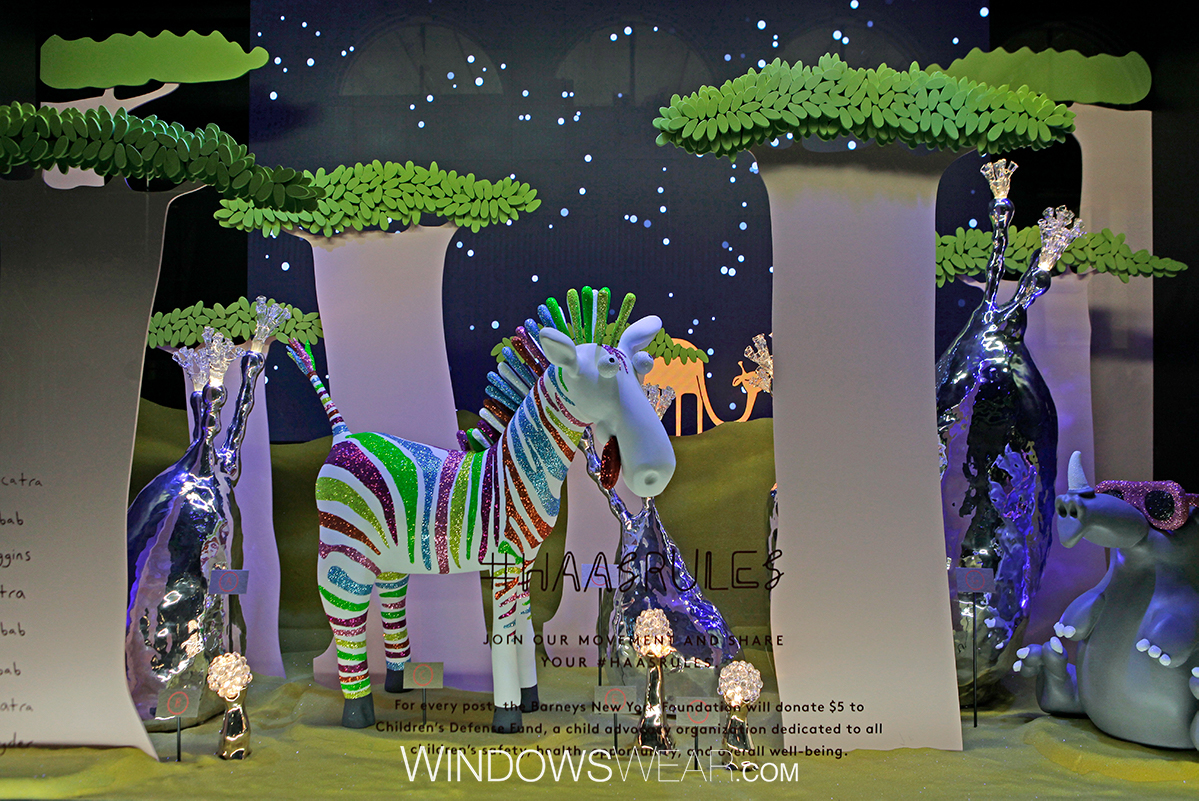The Madison Avenue windows trace a course through time, depicted an imagined evolution from a time before mankind to a post-human distant future. The first window, Primordial, looks at the beginnings of life on our planet and incorporates some of the Haas marble sculptures and creature-like light fixtures.

Up next, the second window transports us into the Haas Brothers imagined world of Utopia, a period of peace, bounty, and even decadence. Set among sculptures from the duos Baobab and Socatra series, were introduced to one of the window’s central characters, a multi-colored-striped zebra named Rainbow Baggins who represents diversity and acceptance, as well as his friend Rhinona Wyder. As with all of the windows, the scene comes to life thanks to an ever-changing digital backdrop illustrated by artist Elliot Blanchard and made possible by digital technology from Christie.

In the third Madison Avenue window, entitled Millennium, we come close to our present day, but with the Haas creations standing in for humans. Their furry creatures interact with digital screens in a forest setting strewn with glittering poppies. The central message of the window is that, even as fear and greed seep into the world, we can choose to embrace love and compassion, fueling hope for a change. The fate of the world lies in our hands, and its up to each of us to decide what kind of future we’ll create. Or as the #HaasRules sum it up, The future is your present.

Rounding out the Madison flagship lineup is the fourth window, a vision of a distant, post-human future called Mushroom Singularity. Plants and animals or possibly computers have taken control of our planet and all coexist harmoniously. Aliens fly across the digital background while glitter-encrusted mountains and mushrooms dominate the scene. This world is populated by Haas pieces from their Afreaks series, each of which has been hand-beaded by a group of women in South African townships.


